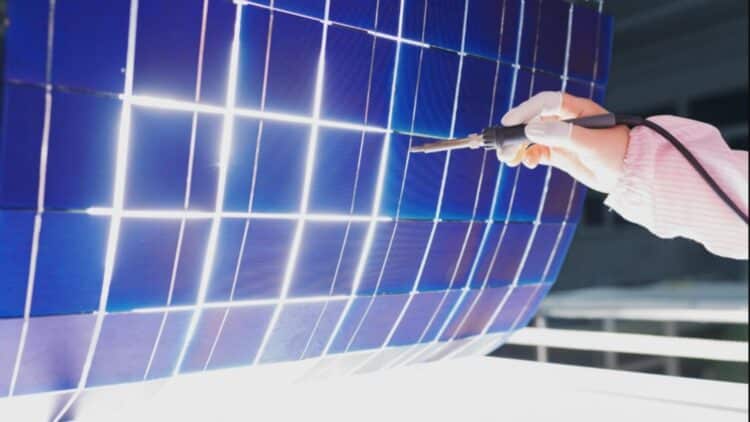In the race to push solar technology beyond the limits of silicon and the instability of perovskite, one such mineral has reentered the solar game. Kesterite is a compound of copper, zinc, tin, and sulfur (CZTS) that shows that what had initially been considered impossible solar material can surely prove to be the future of sustainable solar energy.
Kesterite just set a new record in Australia
Researchers at the University of New South Wales (UNSW) in Australia, led by Scientia Professor Xiaojing Hao, have broken the world record for kesterite solar cell efficiency, reaching a best-ever 13,2% in high bandgap cells which is an incredible step forward from the previous record of 11,4%. The secret to such performances is of course hydrogen.
The way in which researchers achieved the record was through hydrogen passivation, a fabrication technique that neutralizes the microscopic defects that typically plague CZTS cells. This is important as these defect cells have been decreasing the material’s efficiency making it problematic more than promising. Adding hydrogen to the mix allows the material to behave in an enigmatic way, converting sunlight into electricity more efficiently than ever deemed possible.
According to Professor Hao:
“What we are trying to do is answer the question coming from the PV industry as to what the next generation of cells will be made of.”
Having said this, Kesterite has several advantages. Kesterite’s advantages tend to be as elemental as its composition, being made entirely from abundant, low-cost, and non-toxic materials, unlike perovskites, which often rely on lead-based compounds and suffer from stability issues. In contrast, CZTS exhibits long-term durability, is environmentally safe, and thus can be produced at scale without depending on rare earth elements or conflict minerals.
Kesterite cells, with their higher bandgaps, are ideal for stacking atop silicon cells to create multi-junction panels that capture a broader spectrum of light and hence the true advantage of kesterite can be seen its solar usage. Kesterite does not mean to replace silicon completely, but aims to improve silicon usage in panels.
The kesterite revolution is going beyond boundaries
The joy about kesterite doesn’t stop in Sydney as a team of researchers in China and Malaysia also simulated an innovative CZTS solar cell design that incorporates a tungsten oxide (WO₃) buffer layer and a CZTSe back surface field (BSF). What resulted was a theoretical 29.3% efficiency, more than double the current world record. The testing proves that kesterite may very well outperform rivals in most commercial silicon panels.
Part of the design replaces cadmium sulfide (CdS), a toxic and expensive material, with the much safer and cheaper alternative-WO₃, without compromising on conductivity.
Kesterite: Not better, but smarter
What makes kesterite a truly compelling option is the fact that it shows a balance between sustainability and performance. Unlike perovskite panels, which can degrade within a year, CZTS cells promises over a decade of stable operation. Their non-toxic nature makes them viable for installation in sensitive environments including that of rooftops and remote villages.
Professor Hao further notes:
“Whereas with CZTS, if we get it to 20% efficiency, then I think it will really take off because there are no limitations.”
The UNSW team expects commercial viability by 2030, and this timeline does seem realistic due to current international progress.
The future of solar in the form of kersterite
Albeit a dark horse, Kesterite is quietly transforming the solar industry. While kersterite may not be as flashy as perovskite, nor as a big a solar statement as silicon, kersterite combines practicality, environmental integrity, and technical promise that could be unbeatable in the solar world.
The material that was once dismissed due to the manufacturing challenges it posed is set to reimagine solar energy while showcasing performance not just efficient but highly sustainable. As we questioned why we are still making flat solar panels, we should also question why it took so long for kersterite to come into the solar picture?


